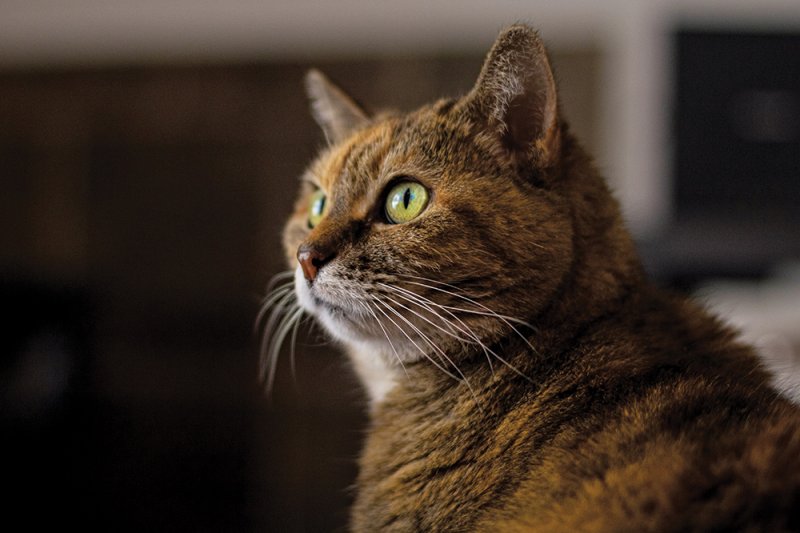 People responded in different ways to the COVID-19 pandemic, and one of the most common was to adopt a pet. According to the ASPCA, one in five American households welcomed a dog or cat during the first year of the pandemic.
People responded in different ways to the COVID-19 pandemic, and one of the most common was to adopt a pet. According to the ASPCA, one in five American households welcomed a dog or cat during the first year of the pandemic.
That pandemic surge has since subsided, and adoption levels have returned to normal, the ASPCA’s report states. But because so many of that surge were first-time pet owners, it created a moment of opportunity in the pet care market, particularly for pet care insurance.
At the NH Humane Society, located in Laconia, Executive Director Charles Stanton says his organization didn’t necessarily see a spike in overall adoptions, “but we did have quite a few people who were interested in adopting for the first time because they thought they would have enough time at home to be able to be accommodating to a new family member.”
Stanton says he heard reports of a consequent wave of so-called “failed adoptions,” when a pet is brought back to a shelter when the adopters have second thoughts but says he didn’t experience that at NHHS.
“It was a very inspiring time for us, and we were grateful to find even more families to help us achieve our mission,” Stanton says.
The Costs of Pet Ownership
One of the reasons why adopters might give up their pet is cost, which can be more than a prospective adopter expected. During a regular year of pet ownership, the ASPCA estimates it could cost between $500 and $1,000 to own a dog—slightly less for a cat—including food, supplies, grooming and veterinary care. The first year, which includes adoption fees and the purchasing of many supplies such as crates and bedding, could approach $2,000.
One way to control that cost is through a pet health insurance policy, though it isn’t an automatic recommendation, Stanton says. “Pet insurance can be expensive,” he says. “It is a significant consideration for families as they think through their financial obligations. I think that pet insurance can be a wonderful resource if it is something you can balance among your
other priorities.”
Stanton notes that the pet insurance market is diversifying, with a broader availability of plans than ever before. More competition has specifically led to more options on the affordable end of the spectrum.
More People Purchasing
ASPCA Pet Health Insurance is one of the major players in the increasingly crowded field. Kit Carroll, spokesperson for ASPCA Pet Health Insurance, says a wave of new interest in pet insurance coincided with the surge in adoptions in 2020. A report by the North American Pet Insurance Association, which represents the 25 companies that provide pet insurance policies in the U.S. and Canada, states that 4.41 million pets were insured in North America by the end of 2021, a year-over-year increase of 27.7%.
“The way we treat and interact with our pets is changing too. They are no longer just pets, they are part of the family,” Carroll says. “Similar to human insurance, people want to ensure their pets are protected against the unforeseen as well.”
How much does a policy cost? There are a lot of factors that go into it, including what type and breed of pet is being insured, where it lives, the plan’s deductible and limits, and what the plan covers. “Generally speaking, you can expect to pay somewhere between $35 and $55 per month for your dog,” Carroll says. “In addition, we offer an accident-only policy that is even more affordable.”

Market Potential
Even after the pandemic spike, there’s still a huge market left unserved. Edwin Plotts, director at the New York-based brokerage Pawlicy Advisor, says the market penetration rate for pet insurance is 3.89% for dogs and 0.95% for cats.
Most customers buy insurance for the peace of mind it provides, as they know they will be able to provide the care their pets need, even if it’s more than they could afford out-of-pocket. It also helps stabilize one area of a household budget.
“There is no one-size-fits all pet insurance,” Plotts says. There are many factors to consider, such as what sorts of illnesses are associated with your pet’s breed and what sort of therapies you would be interested in providing. He suggests comparing several plans from reputable providers and asking your veterinarian what conditions you should be sure are covered.
The right plan could mean more time with your furry friend, Plotts says. “Pet owners with pet insurance are far less likely to decline diagnostics and treatment plans due to economic reasons. This directly helps avoid economic euthanasia and empowers the pet owner to give their pet the best care possible when dealing with unexpected injuries or illnesses,” Plotts says.
Pet owners who are considering a policy should act before they need it, because most pet insurance providers won’t cover pre-existing conditions.

 Current Issue - May 2024
Current Issue - May 2024